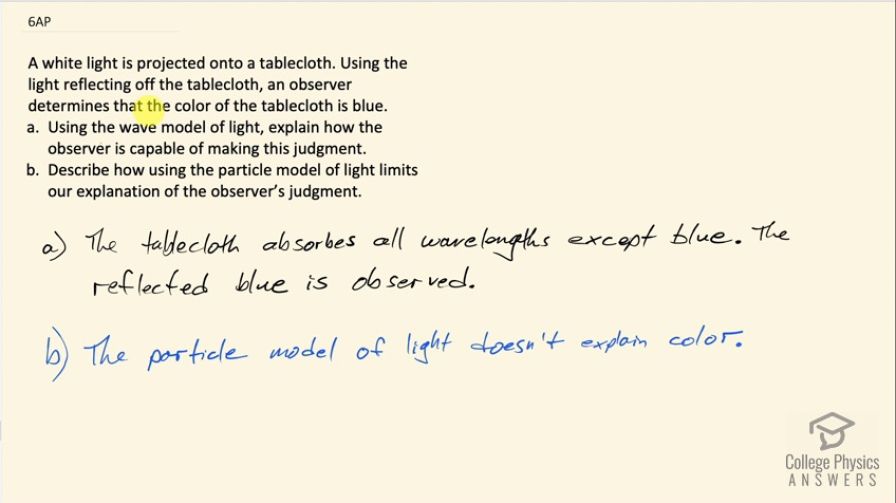Question
A white light is projected onto a tablecloth. Using the light reflecting off the tablecloth, an observer determines that the color of the tablecloth is blue.
- Using the wave model of light, explain how the observer is capable of making this judgment.
- Describe how using the particle model of light limits our explanation of the observer’s judgment.
Final Answer
- The tablecloth absorbs all wavelengths except blue. The reflected blue is observed.
- The particle model of light doesn't explain color.
Solution video
OpenStax College Physics for AP® Courses, Chapter 26, Problem 6 (Test Prep for AP® Courses)

vote with a rating of
votes with an average rating of
.
Video Transcript
This is College Physics Answers with Shaun Dychko. White light is projected onto a tablecloth and the light reflected off the tablecloth is observed and the observer notices that the tablecloth is blue so part (a) asks us using the wave model of light, explain how the observer knows the tablecloth is blue? So the tablecloth absorbs all wavelength except for blue and so the blue is reflected and that's why this is the color observed. In part (b) we are meant to describe how using the particle model of light limits our explanation of the observer's judgment because the particle model doesn't talk about how color arises and so yes, we can't really use it to explain the color of the tablecloth.